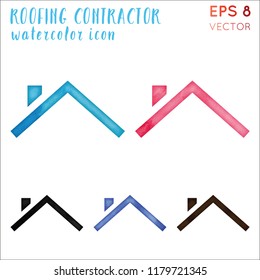Discover The Extraordinary Capability Of Painting Techniques To Change Small Locations, Exposing Keys That Produce The Illusion Of Space
Discover The Extraordinary Capability Of Painting Techniques To Change Small Locations, Exposing Keys That Produce The Illusion Of Space
Blog Article
Content Produce By-
In the world of interior decoration, the art of optimizing small areas via critical paint methods offers a profound possibility to transform cramped locations right into visually large refuges. The cautious choice of light shade combinations and brilliant use visual fallacies can function wonders in creating the impression of space where there seems to be none. By utilizing these strategies sensibly, one can craft a setting that opposes its physical borders, welcoming a sense of airiness and visibility that conceals its real measurements.
Light Shade Selection
Picking light shades for your paint can substantially enhance the illusion of room within your art work. Light colors such as soft pastels, whites, and light grays have the capability to show more light, making a space really feel even more open and ventilated. These colors develop a sense of expansiveness, making walls appear to recede and ceilings seem greater.
By using light shades on both wall surfaces and ceilings, you can blur the limits of the area, giving the perception of a bigger area.
Additionally, light shades have the power to jump natural and fabricated light around the space, brightening dark edges and casting fewer shadows. Recommended Online site contributes to the general spacious feel but additionally creates an extra inviting and dynamic atmosphere.
When choosing light shades, think about the touches to guarantee consistency with various other components in the area. By purposefully including light shades right into your painting, you can change a restricted area right into an aesthetically bigger and extra welcoming environment.
Strategic Trim Paint
When aiming to produce the impression of room in your painting, strategic trim painting plays an essential role in defining boundaries and enhancing deepness assumption. By tactically selecting the colors and finishes for trim work, you can properly manipulate how light engages with the space, eventually affecting how big or small a space feels.
To make a space appear bigger, think about painting the trim a lighter color than the wall surfaces. This comparison creates a sense of deepness, making the walls recede and the area really feel more expansive.
On the other hand, painting the trim the same shade as the walls can produce a smooth look that blurs the edges, providing the illusion of a constant surface area and making the borders of the space less defined.
In discover here , using a high-gloss coating on trim can mirror more light, more boosting the assumption of room. Alternatively, a matte finish can absorb light, producing a cozier environment.
Very carefully taking into consideration these details when repainting trim can significantly influence the total feeling and regarded dimension of an area.
Optical Illusion Techniques
Using optical illusion techniques in paint can properly modify understandings of deepness and area within an offered setting. One usual technique is the use of slopes, where colors change from light to dark tones. By using a lighter color at the top of a wall and progressively dimming it towards all-time low, the ceiling can appear greater, producing a sense of vertical room. Conversely, repainting the flooring a darker shade than the walls can make it appear like the area expands better than it in fact does.
Another visual fallacy method includes the critical positioning of patterns. Horizontal stripes, as an example, can visually broaden a slim room, while vertical red stripes can lengthen an area. Geometric patterns or murals with point of view can also fool the eye right into viewing even more depth.
Additionally, integrating reflective surfaces like mirrors or metallic paints can jump light around the area, making it feel more open and large. By skillfully utilizing these visual fallacy strategies, painters can change tiny rooms into visually extensive locations.
Final thought
Finally, calculated paint techniques can be made use of to maximize little spaces and create the illusion of a bigger and a lot more open area.
By choosing light colors for wall surfaces and ceilings, utilizing lighter trim shades, and including visual fallacy strategies, perceptions of depth and size can be manipulated to change a small space right into a visually larger and extra inviting setting.
